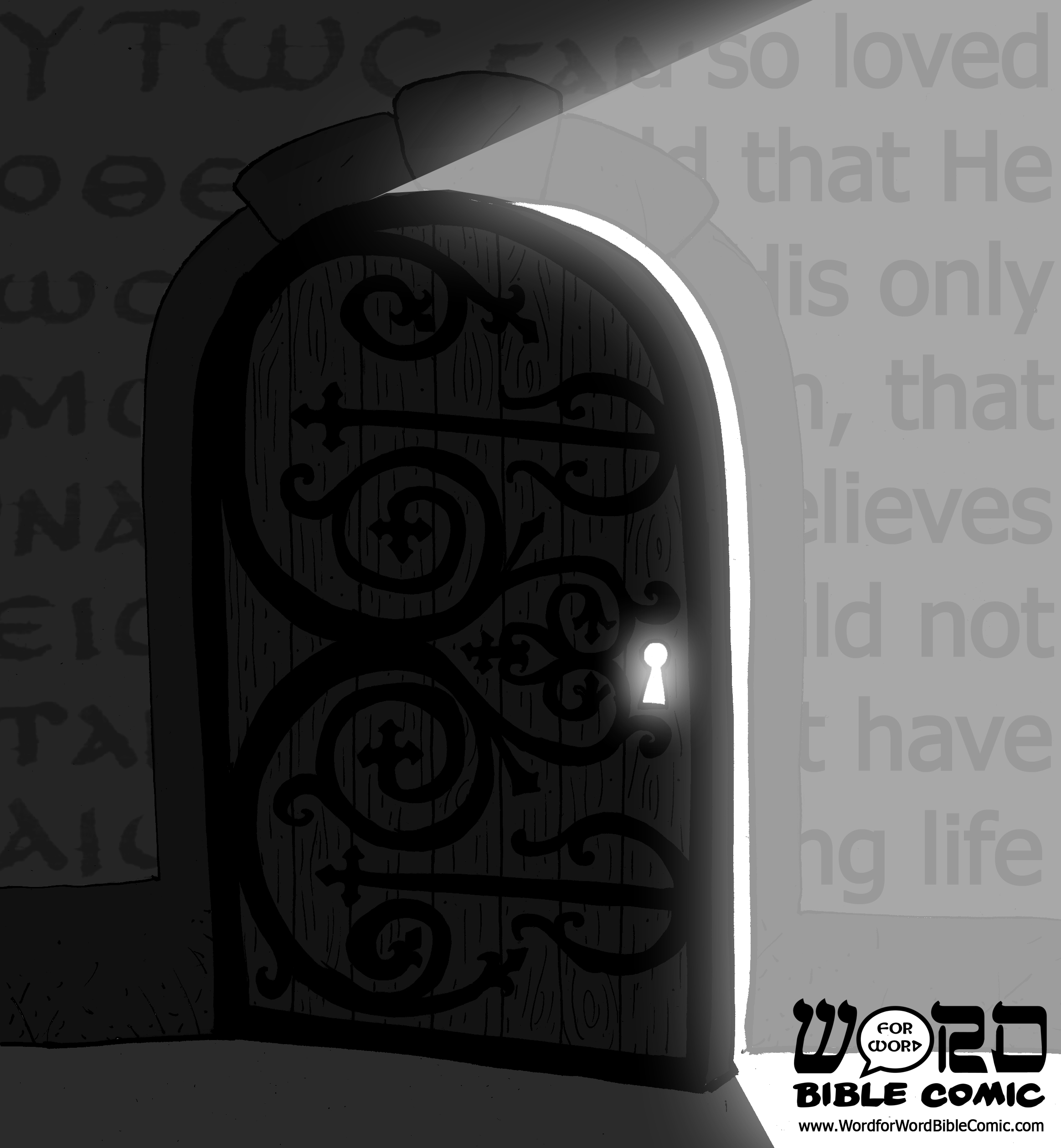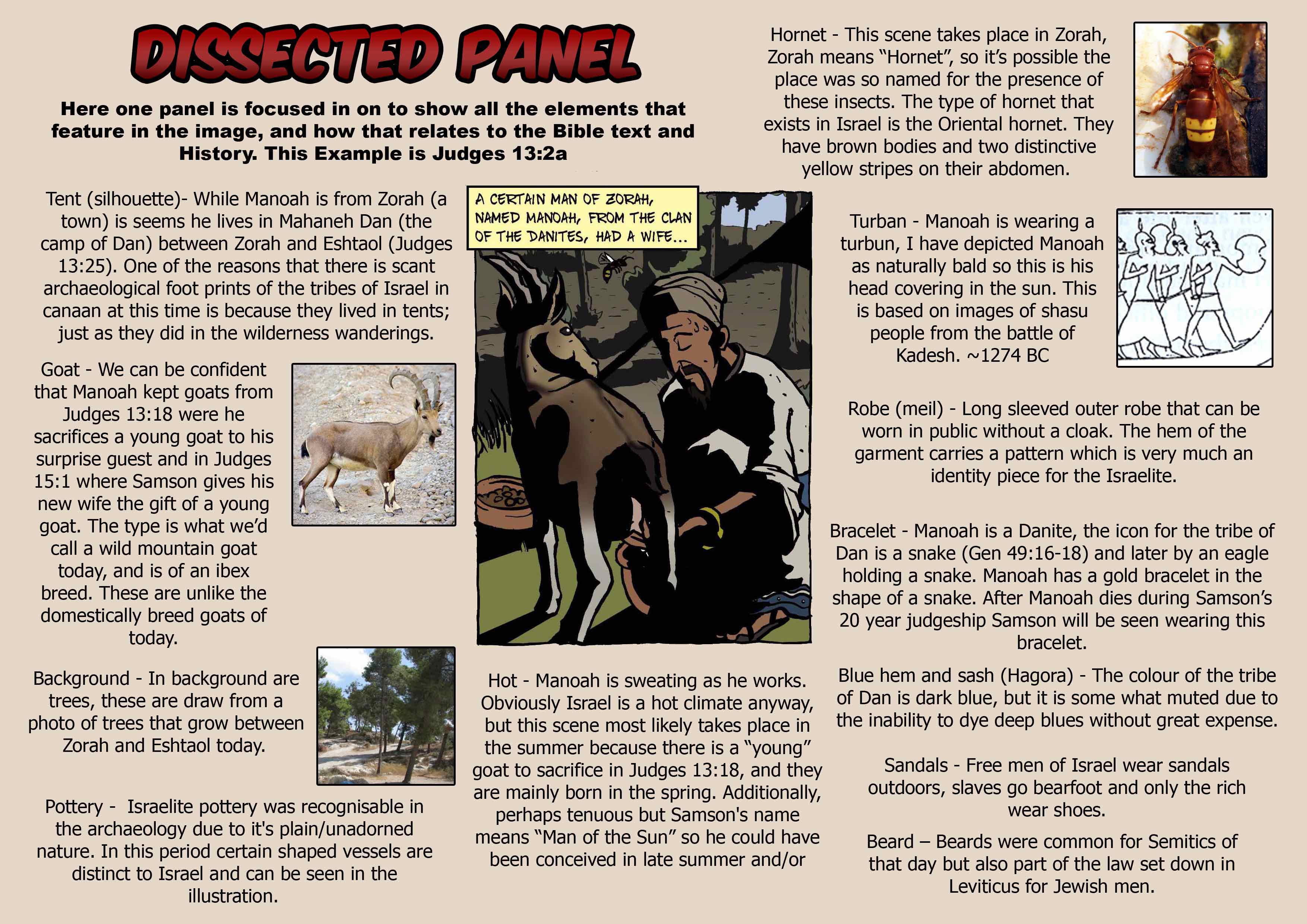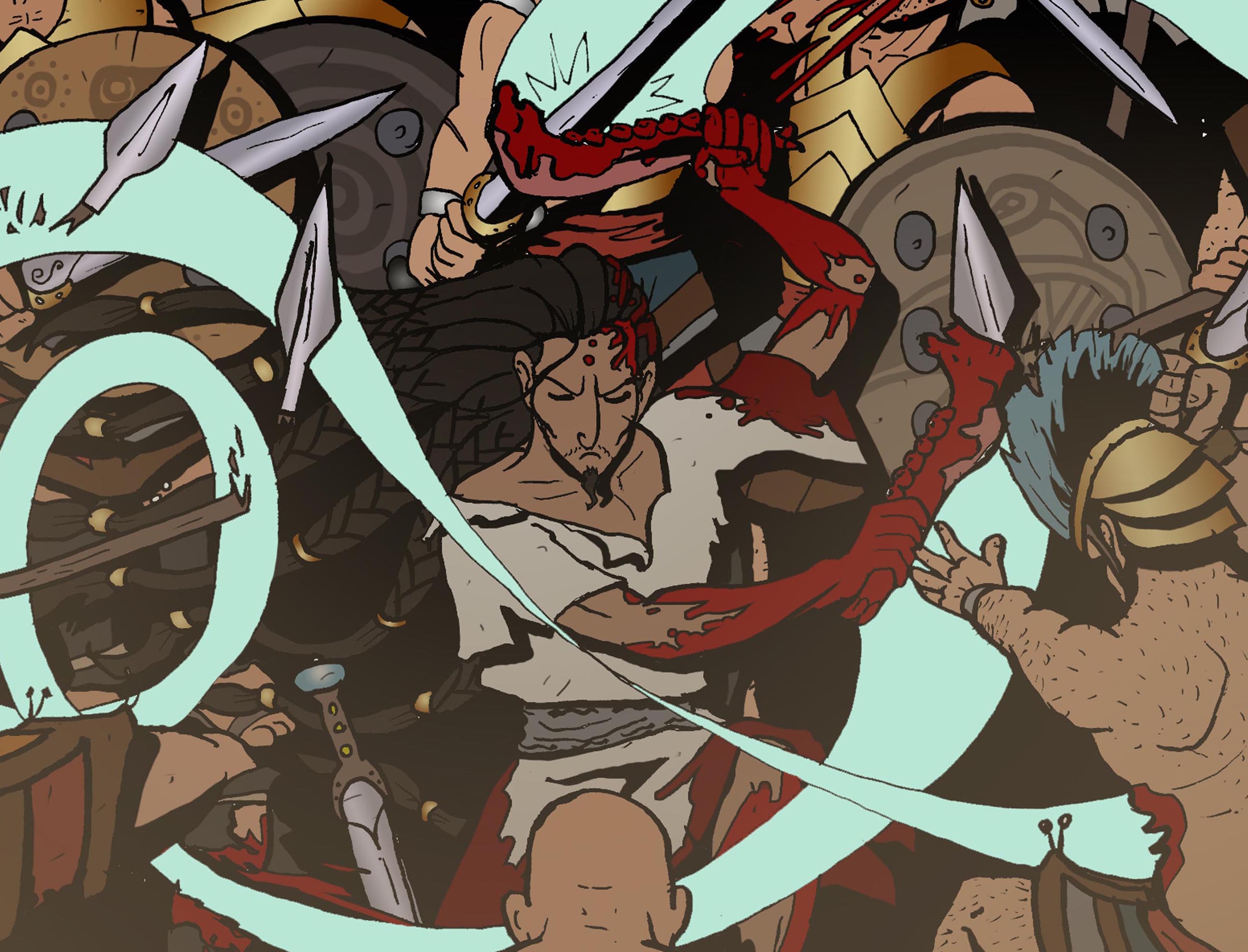 Creeds are the church’s most important statements of faith over the centuries, but are they needed today? Are they only good for public worship services or can individuals benefit from them on a day-to-day level?
Creeds are the church’s most important statements of faith over the centuries, but are they needed today? Are they only good for public worship services or can individuals benefit from them on a day-to-day level?
Rev. Dr. Justin Holcomb (@JustinHolcomb) is an Episcopal priest and a professor of theology and Christian thought at Gordon-Conwell Theological Seminary and Reformed Theological Seminary.
[See our previous blogpost, The Long Reach of Christian Beliefs (The Apostles’ Creed and More)]
Bible Gateway interviewed Dr. Holcolmb on his book Know the Creeds and Councils (Zondervan, 2014), part of Zondervan’s KNOW series.
 Are there any creeds in the Bible or did they develop later?
Are there any creeds in the Bible or did they develop later?
Dr. Holcolmb: The earliest creeds are arguably to be found in Scripture. In the Old Testament, what’s known as the Shema (“Hear, O Israel: the Lord our God, the Lord is one,” Deut. 6:4) is a creedlike statement. While there are no official, full-blown creeds in the New Testament, some scholars have suggested that the beginnings of creeds are already present in the New Testament and were developed by early Christians to defend against subtle pagan influences and to establish key beliefs.
How old are Christian creeds and why were they created?
Dr. Holcolmb: The Apostles’ Creed was developed around 140, the Nicene Creed was written in 325, and the Athanasian Creed was created in the later 400s to early 500s.
Creeds were initially used in baptism, during which the baptismal candidate recited a formula or responded to questions, thereby publicly confessing belief in Jesus Christ. As time passed, however, the creeds also were used to teach new converts the basic elements of the Christian faith. Since the creeds were relatively short summaries of Christian doctrine, they were easy to learn.
Far from being a device of the ivory tower, creeds were the way that ordinary tradesmen and farmers could learn about and pledge their lives to the God of the Bible. Early church creedal statements codified orthodoxy into a widely accepted form to counter heretical teachings that were emerging.
What’s the difference between a creed and a confession?
Dr. Holcolmb: In contrast to creeds, which are basic statements of belief, confessions represent more detailed inquiry into the things of God. The creeds are the boundaries of the faith that separate orthodoxy from heresy, while the confessions color in the picture, tying theology to everyday life in all sorts of ways. Because creeds are bare-bones structures (the outlines of the sketch), it makes sense that the earliest statements of the church are creeds, while later statements of particular denominations are confessions. Creeds distinguish orthodoxy from heresy (or Christian faith from non-Christian faith). Confessions distinguish denominational distinctives (or one type of Christian faith from another type of Christian faith).
Christian confessions often define a particular group’s belief on secondary issues such as infant baptism, the end times, predestination, the Lord’s Supper, and the order of salvation. While the creeds strove to preserve “the faith delivered for all time,” confessions tried to apply the faith to the here and now.
What is a catechism?
Dr. Holcolmb: A catechism is a book or document giving a brief summary of the basic principles of Christianity in Q&A form. Catechisms represent the practical, “on-the-ground” application of the main teaching agreed upon at church councils and expressed through creeds and confessions.
Early Christian catechesis focused on immersion in God’s Word, basic instruction in doctrine, and ethical and moral guidelines.
Catechisms have been around since the early church, which was quite devoted to instructing new believers in the Christian faith. Catechisms are especially helpful for parents who want to train their children in the Christian faith.
What are examples of creeds, confessions, and catechisms?
Dr. Holcolmb:
When were the books of the Bible canonized?
Dr. Holcolmb: The canonization of the New Testament began in the early part of the second century AD. The earliest list of books was made by the heretic Marcion in AD 140. While his list was not authoritative, it did show that the idea of a list of authoritative books was accepted at his time and likely earlier. Just a few decades later, near the end of the second, all but seven book were recognized as apostolic. Those seven were Hebrews, 2 and 3 John, 2 Peter, Jude, James, and Revelation. However, by the end of the fourth century, the 27 books in our present canon were recognized by all the Western churches.
How were church councils formed and how much access did they have to the Bible, especially in the days before the printing press?
Dr. Holcolmb: Councils brought together leaders from all over the known world to hammer out issues, such as responses to heretical teachings, that were too difficult for individual pastors or bishops to handle alone. There are seven ecumenical councils through church history and there have been 14 additional Catholic councils. Despite many of these happening before the printing press, participants had access to copies of the Bible.
Briefly, what were some of the main councils and their pronouncements through the centuries?
Dr. Holcolmb: The first recorded instance of a church council is found in the New Testament. The Jerusalem Council is the name that was given to the meeting of church leaders of Antioch (with Paul and Barnabas) and of Jerusalem in which the large growth in the number of Gentile converts in the early church was discussed (Acts 15:2-29).
Like the Jerusalem Council, church councils were called to address not only a disagreement over a theological issue but also the practical ramifications of that issue. For instance, in the Council of Nicaea (325), the question being asked was, “How can we worship one God (the Father) and also worship Jesus Christ?” Though this was a practical question about worship, it couldn’t be disconnected from the more abstract theological issue of how Jesus Christ is related to his Father. The council affirmed that both Jesus and the Father are members of a single being, God.
The first Council of Ephesus (431) emphasized the divinity of Jesus, in addition to his humanity, as crucial for salvation. The Council of Chalcedon (451) described the incarnation of the Second Person of the Trinity while it denied that a man was converted into God or that God was converted into man. There was no confusion or absorption between the divine nature and the human nature of Christ. The two remained distinct. Similarly, the incarnation was not merely a divine indwelling of a human nor a connection between two persons. Instead, Chalcedon asserted that there was a real union between the divine and human natures that existed in one personal life: the life of Jesus of Nazareth.
Did creeds, councils, confessions, or catechisms encourage the reading of the Bible by church members?
Dr. Holcolmb: Yes. For the most part, reading the Bible was celebrated and encouraged through the history of the church. For instance, the basic content of Luther’s smaller catechism was to be memorized first, and the Scripture references supporting the basic answers were to be memorized at a later date. In this way, the catechism provided both an intimate acquaintance with the Bible as well as a guidebook for reading and understanding the Bible.
Also, the Westminster Confession of Faith brings high theology to the everyday believer. For instance, a practical statement on the authority of Scripture opens the confession. See Chapter 1.VII and IX. The authors of the confession acknowledged that the Bible can be a hard book to read (and that merely surface-level readings are not always the right ones), but also argues that the parts that are really necessary to understand salvation can be understood by an ordinary person. It also mentions that since all the books of the Bible are inspired by the Holy Spirit, the reader can find answers in one section that illuminate puzzling parts of another. The confession also lists the books in the Bible as well as the reason that the church accepts certain books and rejects others.
The Second Vatican Council included a statement on divine revelation, Dei Verbum. The emphasis of the document was on the fullness of God’s revelation in Jesus Christ, carried on by Scripture and tradition. The text also insisted that the laity should read and study the Bible and that the Bible should be translated into native languages.
Why do you believe creeds are still necessary for the church today?
Dr. Holcolmb: I don’t think they’re “necessary,” but I think they’re very important. The creeds and councils took advantage of extrabiblical ideas to express what they thought Scripture taught. However, it should be kept in mind that the use of different language from Scripture doesn’t mean that there are not biblical principles involved. In many ways, the councils and creeds and the theological debates leading up to it were driven by an attempt to understand what the Bible says about the person of Jesus Christ.
Nowadays, we have a largely literate population and an ample supply of Bibles, and so it’s easy to wonder whether creeds are necessary. Some may even think that the creeds stand in opposition to (or at least in tension with) the authority of Holy Scripture. Creeds aren’t dogmas that are imposed on Scripture but are themselves drawn from the Bible and provide a touchstone to the faith for Christians of all times and places.
Is the Apostles’ Creed the most popular creed? Why?
Dr. Holcolmb: The Apostles’ Creed is the oldest and most popular creed of the church, and has greatly influenced the other creeds and confessions written throughout church history. The creed was a baptismal confession made by converts at their baptism. In that regard, the Creed served an important need in the early church. Perhaps, that’s one main reason why it “caught on.”
Theologians throughout church history affirmed various parts of the Creed. Others devoted entire chapters in their books to the Apostles’ Creed and one built his system of doctrine through the framework of the Creed.
The Apostles’ Creed is recited today as a matter of liturgy in many churches. Do you think people carefully consider and understand what they’re saying?
Dr. Holcolmb: I’m sure there’s a wide range of response: some consider carefully and understand what they’re saying and for some it’s something they just memorized. In the denomination where I serve, we recite the Apostles’ Creed when we celebrate baptism and confirmation. Usually on Sunday we recite the Nicene Creed, so when we recite the Apostle’s Creed it stands out to us and reminds us of very important events in many believers’ lives: baptism and confirmation.
What’s your favorite creed? Why?
Dr. Holcolmb: My favorite creed is the Nicene Creed.
First, I’m part of a tradition that says together the Nicene Creed every Sunday. So, it’s tied closely to how I worship.
Second, it’s a historic, globally accepted ecumenical creed that encapsulates the good news of the gospel into a short and rich summary. It covers the basic essentials of 1) who God is, 2) what God is like, and 3) how God saves.
Third, every week it reminds me of what’s most important when I, throughout that week, have been distracted and lured into believing other things are more worthy of my time, energy, and attention than the God described in that creed.
Is there anything else you’d like to say?
Dr. Holcolmb: The fact that Christianity developed—that the 16th century, for instance, looked very different from the third, and that both looked very different from the 21st—can sometimes lead us to wonder what the essential core of Christianity is. As a result, some people decide to ignore history altogether and try to reconstruct “real Christianity” with nothing more than a Bible. But this approach misses a great deal. Christians of the past were no less concerned with being faithful to God than we are, and they sought to fit together all that Scripture has to say about the mysteries of Christianity—the incarnation, the Trinity, predestination, and more—with all the intellectual power of their times. To ignore these insights is to attempt to reinvent the wheel, and to risk reinventing it badly.
Bio: Justin Holcomb (PhD, Emory University) has authored, co-authored, and edited several books, including Know the Heretics (Zondervan, 2014) and On the Grace of God (Crossway, 2013). He lives with his wife and daughters in Orlando, Florida.
 Simon Amadeus Pillario (pen name) has a dream of creating a complete, word-for-word Bible comic in the graphic novel genre. He respects Scripture and wants to honor it by illustrating its grand storyline. For more information, read our interview with Pillario and learn how you can help him achieve his dream (quickly, because time is running out on his Kickstarter campaign).
Simon Amadeus Pillario (pen name) has a dream of creating a complete, word-for-word Bible comic in the graphic novel genre. He respects Scripture and wants to honor it by illustrating its grand storyline. For more information, read our interview with Pillario and learn how you can help him achieve his dream (quickly, because time is running out on his Kickstarter campaign).







 As part of its
As part of its  Creeds are the church’s most important statements of faith over the centuries, but are they needed today? Are they only good for public worship services or can individuals benefit from them on a day-to-day level?
Creeds are the church’s most important statements of faith over the centuries, but are they needed today? Are they only good for public worship services or can individuals benefit from them on a day-to-day level?


